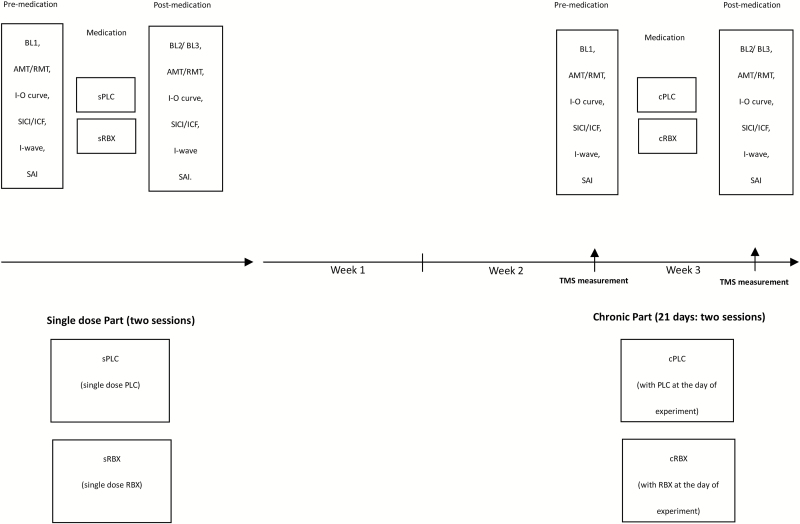Figure 1.
Experimental course of the present study (partial crossover design). The study was conducted in 2 parts (single dose part and chronic part). For the single-dose part (2 sessions), subjects received 8 mg single-dose reboxetine (sRBX) or placebo medication (sPLC). First, transcranial magnetic stimulation (TMS) was applied over the left motor cortical representation area of the right abductor digiti minimi muscle (ADM) with an intensity to elicit motor-evoked potentials (MEPs) with a peak-to-peak amplitude of on average 1 mV (SI1mV). Then, active and resting motor thresholds (AMT and RMT) were determined. Afterwards, input-output curve (I-O curve), short-latency intracortical inhibition and intracortical facilitation (SICI-ICF), I-wave facilitation, and short-interval afferent inhibition (SAI) were conducted in randomized order. Two hours after intake of the medication, the same TMS measurements were repeated to explore the effect RBX on excitability. For the chronic part (2 sessions), the same subjects took 8 mg RBX consecutively for 21 days. During this period, the other 2 sessions (cRBX: with RBX at the day of experiment or cPLC: with PLC at the day of experiment) were conducted. The design of each session in the chronic part was the same as for the respective single dose condition.

